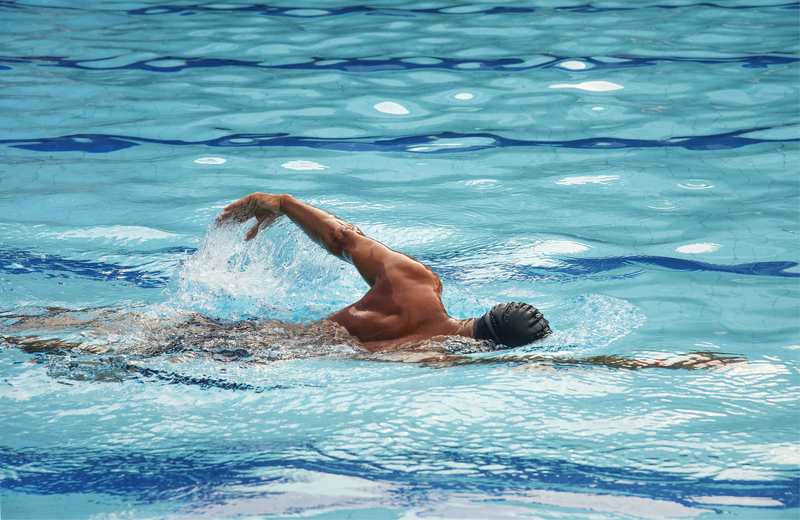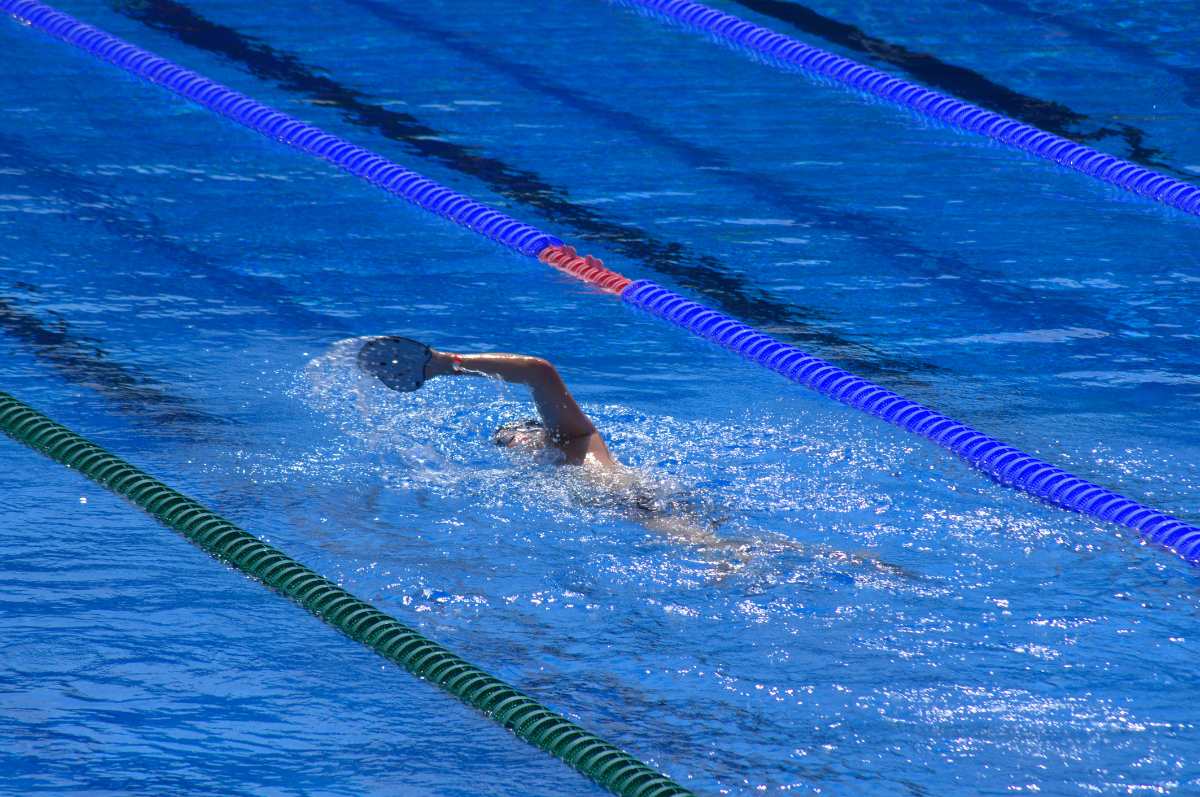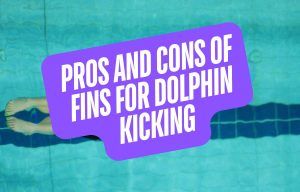Swimmers are always on the search for how to swim faster and longer.
For swimmers just getting into the lap pool, they may be trying to make it to their full first mile in the water. More experienced swimmers may be trying to look to crank out a new PR.
While there is no magic set or “hack” that will overnight boost your swim stamina, there are some tried-and-true guidelines you can follow to ramp up your swimming without injuring yourself.
Below, I share some techniques and tips based on my own 30+ year swim career, as well as share insights from Olympic distance champions.
I’ll also share three common mistakes swimmers make when boosting swim endurance.
Let’s dive right in.
How to Increase Swim Stamina in the Water
Here are some time-tested ways to improve endurance with your swimming:
Break up your swims with intervals
One of the things that elite swimmers know is that in order to be able to swim a long time with excellent technique and speed, you need to be able to build that performance.
And building that performance and endurance means apart the swim. This allows you to swim longer with better technique while also holding a much faster average speed.
As an example, let’s say that your goal today at the pool was to swim 3,000m relatively fast.
Doing 3,000m swim straight, with no breaks, let’s say you hold an average pace of 1:30 per 100m.
Let’s do the same distance, but this time break it up into 30x100s with around :20 to :30 rest between 100s.
Between the two sets, which one will net a higher average speed? Better technique?
If you guessed the 100s, you’d be correct.
This form of training is nothing new to elite distance swimmers in Australia, who have absolutely dominated the distance events at the international level over the past few decades.
One perfect example is Kieren Perkins, who twice smashed the world record in the 1500m freestyle during the mid-1990s while dominating the event for the better part of a decade.
(He won gold in 1992 and 1996 Olympics in the event, and then won silver in 2000 behind another Australian.)
Perkins and his teammates regularly did 30×100 freestyle, every Wednesday morning, averaging :56 to :57 per 100m (in a long course, Olympic-sized pool), an interval where he got around :30 to :40 rest.
The goal was sustained speed, not just swimming endlessly.
Long, unbroken swims have a place in your training, but if you really want to increase and improve swimming endurance, break it apart, use an interval that gives you rest that borders on uncomfortable, and go fast.
Of course, there are other ways you can break up those longer swims.
Carrying on the example of breaking up a 3,000m swim, here are some other ways you can tackle it:
- 15×200 freestyle swim @:30 rest
- 10×300 freestyle swim @:30 rest
- 2x [500 free + 400 free + 300 free + 200 free + 100 free descending speed and effort with :30 rest between each rep and an extra minute between rounds]
Breaking apart distance will keep you more engaged and focused during your distance swim workouts as well—the shorter speeds and “more ends” will encourage you to push a faster pace.

Track your progress for added motivation.
Improving swim endurance requires tracking some basic metrics. After all, how can you know if endurance is improving if you don’t have some numbers to quantify improvement?
The basics include:
- Overall laps swum. This is the total number of laps you completed in the course of a swim workout.
- Longest repetition. The longest, unbroken swim completed during the workout.
- Average pace. Endurance isn’t just a distance metric, it can also be measured in speed.
And so on.
There are plenty of ways you can track your laps while swimming, from smartwatches for swimming to smart swim goggles (which have digital read-outs inside the goggle lens with live key swim workout metrics), to using the pace clock and your brain for tracking and remembering laps.
It can be easy to get lost in the weeds with all of the information that swim trackers can provide, so try and keep things simple and measure one or two things that matter most.
Tracking and measuring your swim workouts will give you objective metrics that you can use to stay motivated and plot your training moving forward.
After all, how can you truly know for sure that your swim endurance is improving if you aren’t tracking it?
Mix things up with equipment
Swimmers love their toys and swimming aids.
Swim fins, hand paddles, swimmer’s snorkel, pull buoy, kickboard—you name it, swimmers will stuff it into our swim bag and haul it down to the end of the lane and use it.
While some swimmers may use their gear as a crutch during workouts (*raises hand*), introducing different equipment can:
- Extend your workouts
- Reduce demand on the shoulders (or legs)
- And actually crank up the metabolic demand of the workout, improving overall endurance.
How you use them to accomplish your goal of increasing swim endurance can vary, but my preferred method is to pair whatever tool you are doing with regular swimming.
For example, one of the sets that I’ve used on repeat over the years—and is always guaranteed to get my face red and hot—is kick/swim sets.
For example:
- 10×200 freestyle as 100 kick, 100 swim @:30 rest
- 20×100 freestyle alternating 1 kick, 1 swim @:30 rest
- 40×50 freestyle alternating 1 kick fast, 1 swim cruise @1:00
If you are looking for a set that is straight-up for heart rate purposes, injecting kick is a guaranteed way to do it.
Your legs burn a ton of oxygen, which means that when you dump the kickboard on the wall and push-off to start swimming, your body is sitting squarely in that nice and toasty aerobic zone.
This gear/swim concept can be extended to the rest of the stuff in your swim bag, too:
- 10×200 freestyle as 100 with a pull buoy, 100 swim @:30 rest
- 1,000 freestyle with fins (alternating 100 swim, 100 kick)
- 20×50 freestyle alternating 1 with pull buoy and paddles, 1 swim with paddles
Swimmers have a ton of choices when it comes to aids and equipment; don’t be afraid to use them to push your endurance levels in the water.
Add longer warm-ups and warm ups.
One of the sneakiest ways of increasing endurance is adding a little bit more distance to your warm-up and warm-down. Because they are low-intensity meters, they won’t add undue stress to your shoulders and energy systems.
The next time you do a swim practice, add an extra 20-40% to your warm-up and warm-down. It’s a simple way to significantly increase meters in the water without cratering your technique while saving the bulk of your energy and focus for the main set(s).
Most swimmers have a knack for cutting their warm-down altogether, usually because the main set is over, so it’s bye-bye time, running out of time, or simply because they don’t see the value in it.
This is too bad as this is an excellent opportunity to not only add “stress-free” yardage to your swim training, but also kickstart recovery and even help solidify some of the gains you made that day in the water.
Here’s a very simplified example:
| Before | After |
| 500m warm-up | 800m warm-up |
| 10×50 freestyle pull | 10×50 freestyle pull |
| 10×100 freestyle swim | 10×100 freestyle swim |
| 200 warm-down | 500 warm-down |
| Total: 2,200m | Total: 2,800m (+600m) |
There are lots of other benefits of ramping up your warm-ups, including reduced likelihood of injury (because you will be properly warmed-up for the workout).
Focus on efficiency
One of the secrets of high-performance swimming is the ability to swim relaxed and efficiently at high speeds.
When you watch the greats, whether it’s Michael Phelps, Caeleb Dressel, or Katie Ledecky, they have the unique ability to look smooth and easy in the water.
This isn’t an accident.
Elite swimmers are extraordinarily efficient in the water.
Each time you jump in the water, it can be easy to get wrapped up purely on effort. But how efficient are you being in the water?
One of the simplest ways to improve endurance in the water—to be able to swim longer—is to improve efficiency.
Simply put, if you can cross the pool in 20 strokes instead of 24 strokes, you are going to be able to swim longer.
You can focus on becoming a more efficient swimmers by:
Counting your strokes. Aim to progressively lower the number of strokes it requires you to cross the pool. Most swim smartwatches have SWOLF and other stroke counting functions. Counting your strokes is something the pros do, and it is a “quick win” when it comes to reinforcing efficiency.
Drills to improve feel for the water. Use drills, such as sculling, or any number of freestyle drills, to improve your ability to “catch” water and increase efficiency.
This is a case of working smarter and not harder.
A more efficient technique will also raise your ceiling in terms of speed, so make sure to incorporate some efficiency-focused work at the pool each day.
Mistakes to Avoid When Trying to Boost Swim Stamina
Here are the classic mistakes I see swimmers make when trying to build endurance in the lap pool:
1. Too much, too soon
We can all be impatient for results. And we want to be seen as working hard in the pool. Which can lead us down the path of cranking up the meters and intensity too quickly.
Whether you are an experienced swimmer or working towards your first mile-swim, progression is the secret sauce to avoiding injury.
Aim to add 10% volume week over week when getting started. While this may feel like it’s too slow, a gradual increase will reduce the likelihood of injury and burnout.
2. Not swimming fast
Doing long, slow workouts mean you are creating a long, slow training stimulus.
Introduce speed work to your swim workouts.
Not only will this force your body to learn how to move more efficiently through the water, some speed work will also keep things fresh and invigorating, while also raising your baseline speed.
After all, there’s nothing more satisfying than swimming across the pool like your hair is on fire.
3. Not mixing it up
I am a big fan of the concept of putting in the reps.
That said, doing the same sets, the same workouts, on the same intervals and at the same speeds will not yield improvement.
Mix things up by applying different stimuli as the days and weeks go on. Speed up the interval, add distance to reps, add distance to sets, take fewer strokes, and so on.
There are a ton of different ways to improve in the water. To ensure progression and improvement, crank up the stimuli and difficulty as the weeks go on.
The Final Lap
Ultimately, getting better in the pool, whether that’s increasing speed, sharpening your technique, or being able to swim long than ever, requires progression.
Scale up the meters, use equipment to mix things up, and try some of the sets and swim workouts above, and you will be well on your way to rapidly increasing your swim stamina.
More Articles and Resources Like This:
Looking for more guides and articles on how to swim better?
Here are some more resources to get you going:
Fartlek Training for Swimmers: How to Spice Up Your Aerobic Work. Is it sprint work for distance swimmers? Distance work for sprinters? It’s both! Here is why swimmers should embrace Fartlek training during their workouts.
How to Improve Your Freestyle Pull (Plus Sample Swimming Workouts). Ready to level up your freestyle? Here’s how to improve and strengthen your freestyle pull and catch, and a couple of my favorite pull workouts.














